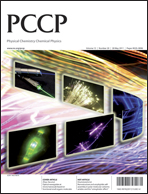Two kinds of TiO2 nanobelts were prepared from commercial P-25 powders via an alkaline hydrothermal method with and without an acid etching process. The uncauterized nanobelts (TNs) exhibited a smooth surface, and mixed phases of anatase and TiO2 (B), whereas the cauterized ones (CTNs) displayed a rough surface and a pure anatase structure. TNs and CTNs were then deposited onto a glassy carbon electrode (GCE) surface with a conductive adhesive (CA), and the resulting chemically modified electrodes exhibited electrocatalytic activities in the oxidation of nucleobases in a 0.1 M phosphate buffer solution (PBS) at pH 7.4. For guanine and adenine, well-defined oxidation peaks were observed in voltammetric measurements at about +0.62 and +0.89 V, respectively, at a potential sweep rate of 100 mV s−1, whereas for cytosine, uracil and thymine, the voltammetric features were not obvious. The average surface coverages (Γ) of guanine and adenine on the CTNs/CA/GCE electrode were estimated to be 4.75 × 10−10 and 7.44 × 10−10 mol cm−2, respectively, which were about twice those at the TNs/CA/GCE electrode. The enhanced activity of the CTN-based electrode towards purine nucleobase oxidation was ascribed to the large specific surface area and anatase structures with enhanced (001) facets of the CTN that facilitated adsorption of the analytes onto the electrode surface and charge transport through the electrode surface layer.

You have access to this article
 Please wait while we load your content...
Something went wrong. Try again?
Please wait while we load your content...
Something went wrong. Try again?


 Please wait while we load your content...
Please wait while we load your content...